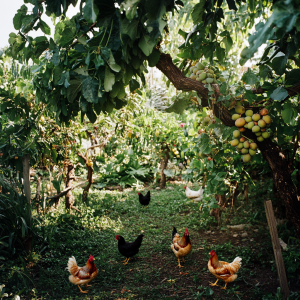 Prepper Outreach Contest Submission
Prepper Outreach Contest Submission
We started prepping in 1967 when our children were small and so was the pay packet.
Our start was a vegetable garden that grew in size as our children grew, and fruit trees, bushes and plants to provide fresh fruit every month of the year – we live in a temperate climate – Auckland, NZ. At present it is mid Autumn and we have figs, Feijoas(pineapple guavas), yellow guavas, apples and grapes, fresh off the trees/vines. Our fruit trees are mainly self sown seedlings, cutting grown or bought wholesale from nurseries 10 at a time. We have canned from our garden and fruit trees each year and try to eat these two years after they go in the jars.
We’ve always stored beans, grains, pasta etc but haven’t been good at making them a part of our everyday diet. After reading The Resilient Gardener by Carol Deppe ( you’re so lucky to be able to buy her strains of corn etc) and Independence Days by Sharon Astyk we have changed our way of feeding ourselves and storing. We are honing our ‘eat what you store and store what you eat skills’ and have a month’s menu using only what we have in store or expect to have in our garden. We plant, in the first week of each month, enough vegetables to feed us and a few others for one month – granted it will be 3-4 months before we get to eat them but this way we don’t have gluts or the opposite. We raise our own seedlings and share them with neighbors and Church members to encourage their growing and storing efforts.
We have 2×5000 gallon water tanks, make our own cider vinegar, dehydrate our home grown fruit and vegetables and have used yeasts on our grapes and apple skins to make our own sourdough starter. Our chickens clean up weeds and insects and provide us with breakfast.
The photo shows some of our red cabbage sauerkraut, pickled lemons and cider vinegar with the discs of mother of vinegar clearly visible.
We enjoy being self reliant and all that this entails
J & A V Auckland, New Zealand


3 Comments
BLinAR · April 11, 2012 at 6:57 am
I would love info how you make your cider vinegar and sourdough starter. Thanks
jacqui · April 11, 2012 at 10:28 am
Cider vinegar – I put the apples skins, cores and bruises through our centrifugal juicer. Then pour the juice into jars and cover with fine curtain net to keep the vinegar flies and dust out. They sit on my bench from late January until early April. At first they ferment and the kitchen smells a bit like a brewery for a couple of days. When the yeasts have used all the sugar the jars contain mainly an alcohol/water mixture – then the bacteria start to consume the alcohol and the by product of this is acetic acid ie vinegar. The yeast and bacteria are on the apples in the field so if they need washing just do it with cold water. The discs you can see in the jars are gelatinous rafts of bateria that form on the top of the jar after about 6 weeks and when they sink a new one forms. You can add these to new juice to speed up the process. They are called ‘mother of vinegar’ and are purported to greatly enhance the health giving properties of cider vinegar.
Sourdough starter – we mixed a few squashed grapes and apple peels with 1/2 jar of water and about 2 Tbsp of wholemeal flour. We lightly covered the jar put it on a sunny window sill for 4 days, strained the fruit pieces and used the rest as our starter – the bread tastes quite different that made from the bought starters and is delicious. Don’t use bought or sprayed fruit as the yeasts you want will probably be dead or have been washed off.
Gloria · April 12, 2012 at 1:06 am
Sounds like a great place to live. It is amazing what people who live off the land can accomplish. The land really does get in your blood.
Comments are closed.